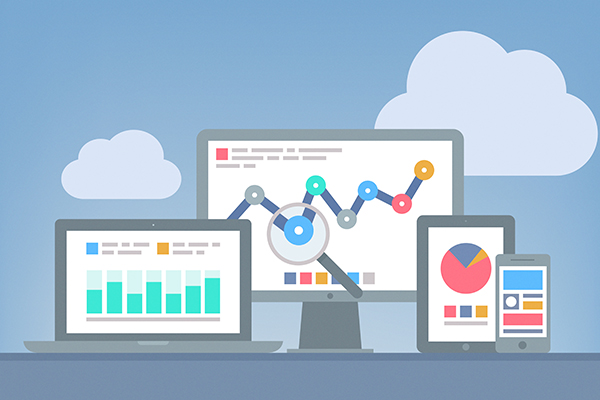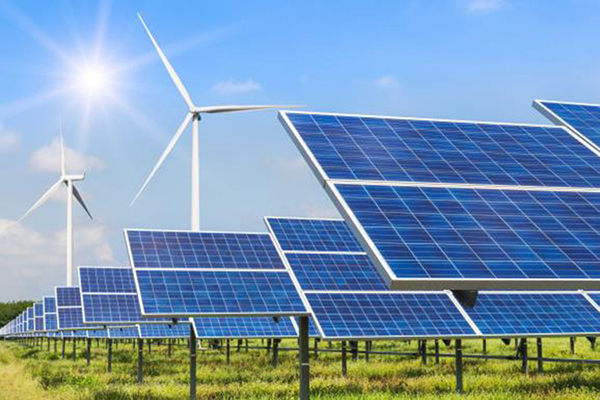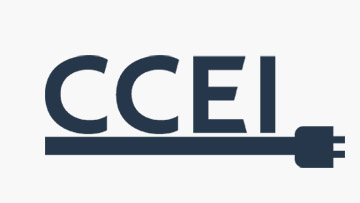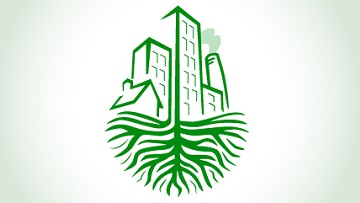This survey is conducted by Statistics Canada in order to collect the necessary information to support the Integrated Business Statistics Program (IBSP). This program combines various survey and administrative data to develop comprehensive measures of the Canadian economy.
The statistical information from the IBSP serves many purposes, including:
- Obtaining information on the supply of and/or demand for energy in Canada
- Enabling governmental agencies to fulfill their regulatory responsibilities in regards to public utilities
- Enabling all levels of government to establish informed policies in the energy area
- Assisting the business community in the corporate decision-making process.
Your information may also be used by Statistics Canada for other statistical and research purposes.
Your participation in this survey is required under the authority of the Statistics Act.
Other important information
Authorization to collect this information
Data are collected under the authority of the Statistics Act, Revised Statutes of Canada, 1985, Chapter S-19.
Confidentiality
By law, Statistics Canada is prohibited from releasing any information it collects that could identify any person, business, or organization, unless consent has been given by the respondent, or as permitted by the Statistics Act. Statistics Canada will use the information from this survey for statistical purposes only.
Record linkages
To enhance the data from this survey and to reduce the reporting burden, Statistics Canada may combine the acquired data with information from other surveys or from administrative sources.
Data-sharing agreements
To reduce respondent burden, Statistics Canada has entered into data-sharing agreements with provincial and territorial statistical agencies and other government organizations, which have agreed to keep the data confidential and use them only for statistical purposes. Statistics Canada will only share data from this survey with those organizations that have demonstrated a requirement to use the data.
Section 11 of the Statistics Act provides for the sharing of information with provincial and territorial statistical agencies that meet certain conditions. These agencies must have the legislative authority to collect the same information, on a mandatory basis, and the legislation must provide substantially the same provisions for confidentiality and penalties for disclosure of confidential information as the Statistics Act. Because these agencies have the legal authority to compel businesses to provide the same information, consent is not requested and businesses may not object to the sharing of the data.
For this survey, there are Section 11 agreements with the provincial and territorial statistical agencies of Newfoundland and Labrador, Nova Scotia, New Brunswick, Québec, Ontario, Manitoba, Saskatchewan, Alberta, British Columbia and the Yukon. The shared data will be limited to information pertaining to business establishments located within the jurisdiction of the respective province or territory.
Section 12 of the Statistics Act provides for the sharing of information with federal, provincial or territorial government organizations. Under Section 12, you may refuse to share your information with any of these organizations by writing a letter of objection to the Chief Statistician, specifying the organizations with which you do not want Statistics Canada to share your data and mailing it to the following address:
Chief Statistician of Canada
Statistics Canada
Attention of Director, Enterprise Statistics Division
150 Tunney's Pasture Driveway
Ottawa, Ontario
K1A 0T6
You may also contact us by email at Statistics Canada Help Desk or by fax at 613-951-6583.
For this survey, there are Section 12 agreements with the statistical agencies of Prince Edward Island, the Northwest Territories and Nunavut as well as with the Newfoundland and Labrador Department of Natural Resources, the New Brunswick Department of Environment and Local Government, the ministère des Finances du Québec, the ministère de l'Environnement et de la Lutte contre les changements climatiques du Québec, the Ministère de l'énergie et des ressources naturelles du Québec, the Ontario Ministry of Energy, the Manitoba Department of Growth, Enterprise and Trade, the Saskatchewan Ministry of the Economy, Alberta Energy, Alberta Energy Regulator, the British Columbia Ministry of Energy, Mines and Low Carbon Innovation, the Canada Energy Regulator, Natural Resources Canada and Environment and Climate Change Canada.
For agreements with provincial and territorial government organizations, the shared data will be limited to information pertaining to business establishments located within the jurisdiction of the respective province or territory.
Note that there is no right of refusal with respect to sharing the data with the Saskatchewan Ministry of the Economy for businesses also required to report under The Oil and Gas Conservation Act and Regulations (Saskatchewan) and The Mineral Resources Act (Saskatchewan).
The Saskatchewan Ministry of the Economy will use the information obtained from these businesses in accordance with the provisions of its respective Acts and Regulations.
Business or organization and contact information
1. Verify or provide the business or organization's legal and operating name and correct where needed.
Note: Legal name modifications should only be done to correct a spelling error or typo.
Legal Name
The legal name is one recognized by law, thus it is the name liable for pursuit or for debts incurred by the business or organization. In the case of a corporation, it is the legal name as fixed by its charter or the statute by which the corporation was created.
Modifications to the legal name should only be done to correct a spelling error or typo.
To indicate a legal name of another legal entity you should instead indicate it in question 3 by selecting 'Not currently operational' and then choosing the applicable reason and providing the legal name of this other entity along with any other requested information.
Operating Name
The operating name is a name the business or organization is commonly known as if different from its legal name. The operating name is synonymous with trade name.
- Legal name
- Operating name (if applicable)
2. Verify or provide the contact information of the designated business or organization contact person for this questionnaire and correct where needed.
Note: The designated contact person is the person who should receive this questionnaire. The designated contact person may not always be the one who actually completes the questionnaire.
- First name
- Last name
- Title
- Preferred language of communication
- Mailing address (number and street)
- City
- Province, territory or state
- Postal code or ZIP code
- Country
- Email address
- Telephone number (including area code)
- Extension number (if applicable)
The maximum number of characters is 10.
- Fax number (including area code)
3. Verify or provide the current operational status of the business or organization identified by the legal and operating name above.
- Operational
- Not currently operational
Why is this business or organization not currently operational?
- Seasonal operations
- When did this business or organization close for the season?
- When does this business or organization expect to resume operations?
- Ceased operations
- When did this business or organization cease operations?
- Why did this business or organization cease operations?
- Bankruptcy
- Liquidation
- Dissolution
- Other - Specify the other reasons why the operations ceased
- Sold operations
- When was this business or organization sold?
- What is the legal name of the buyer?
- Amalgamated with other businesses or organizations
- When did this business or organization amalgamate?
- What is the legal name of the resulting or continuing business or organization?
- What are the legal names of the other amalgamated businesses or organizations?
- Temporarily inactive but will re-open
- When did this business or organization become temporarily inactive?
- When does this business or organization expect to resume operations?
- Why is this business or organization temporarily inactive?
- No longer operating due to other reasons
- When did this business or organization cease operations?
- Why did this business or organization cease operations?
4. Verify or provide the current main activity of the business or organization identified by the legal and operating name above.
Note: The described activity was assigned using the North American Industry Classification System (NAICS).
This question verifies the business or organization's current main activity as classified by the North American Industry Classification System (NAICS). The North American Industry Classification System (NAICS) is an industry classification system developed by the statistical agencies of Canada, Mexico and the United States. Created against the background of the North American Free Trade Agreement, it is designed to provide common definitions of the industrial structure of the three countries and a common statistical framework to facilitate the analysis of the three economies. NAICS is based on supply-side or production-oriented principles, to ensure that industrial data, classified to NAICS, are suitable for the analysis of production-related issues such as industrial performance.
The target entity for which NAICS is designed are businesses and other organizations engaged in the production of goods and services. They include farms, incorporated and unincorporated businesses and government business enterprises. They also include government institutions and agencies engaged in the production of marketed and non-marketed services, as well as organizations such as professional associations, unions, charitable or non-profit organizations, and the employees of households.
The associated NAICS should reflect those activities conducted by the business or organizational units targeted by this questionnaire only, as outlined in the 'Answering this questionnaire' section and which can be identified by the specified legal and operating name. The main activity is the activity which most defines the targeted business or organization's main purpose or reason for existence. For a business or organization that is for-profit, it is normally the activity that generates the majority of the revenue for the entity.
The NAICS classification contains a limited number of activity classifications; the associated classification might be applicable for this business or organization even if it is not exactly how you would describe this business or organization's main activity.
Please note that any modifications to the main activity through your response to this question might not necessarily be reflected prior to the transmitting of subsequent questionnaires and as a result they may not contain this updated information.
The following is the detailed description including any applicable examples or exclusions for the classification currently associated with this business or organization.
Description and examples
- This is the current main activity
- This is not the current main activity
Provide a brief but precise description of this business or organization's main activity
e.g., breakfast cereal manufacturing, shoe store, software development
Main activity
5. You indicated that is not the current main activity.
Was this business or organization's main activity ever classified as: ?
- Yes
- When did the main activity change?
Date
- No
6. Search and select the industry classification code that best corresponds to this business or organization's main activity.
Select this business or organization's activity sector (optional)
- Farming or logging operation
- Construction company or general contractor
- Manufacturer
- Wholesaler
- Retailer
- Provider of passenger or freight transportation
- Provider of investment, savings or insurance products
- Real estate agency, real estate brokerage or leasing company
- Provider of professional, scientific or technical services
- Provider of health care or social services
- Restaurant, bar, hotel, motel or other lodging establishment
- Other sector
Unit of measure
1. What unit of measure will this business use to report natural gas quantities?
Amounts: Report amounts (1000 x m3 or Gigajoules) of natural gas received and delivered during the month under review.
- Thousands of cubic metres (10³m³)
- Gigajoules (GJ)
Supply of natural gas - Imports
2. Did this transmission pipeline physically import natural gas from the United States to Canada?
3. What were the ports of entry for imported natural gas?
Select all that apply.
- Aden - Alberta
- Cardston (Carway) - Alberta
- Coutts (Sierra) - Alberta
- Universal (Reagan Field) - Alberta
- Huntingdon - British Columbia
- Kingsgate - British Columbia
- Emerson - Manitoba
- Sprague - Manitoba
- Brunswick - New Brunswick
- St. Stephen - New Brunswick
- Chippawa - Ontario
- Cornwall - Ontario
- Corunna - Ontario
- Courtright - Ontario
- Fort Frances - Ontario
- Iroquois - Ontario
- Niagara Falls - Ontario
- Ojibway (Windsor) - Ontario
- Rainy River - Ontario
- Sarnia - Ontario
- Sarnia/Blue Water - Ontario
- Sault Ste. Marie - Ontario
- St. Clair - Ontario
- East Hereford - Quebec
- Highwater (Napierville) - Quebec
- Phillipsburg - Quebec
- Loomis - Saskatchewan
- Monchy - Saskatchewan
- North Portal (Williston Basin) - Saskatchewan
- Regway (Elmore) - Saskatchewan
4. What was the quantity of natural gas this transmission pipeline imported at the following ports?
Imports
Report total quantity of natural gas this transmission pipeline physically imported to Canada from the United States, by port of entry.
Include quantities of gas moving in-transit, that is, gas that will leave the United States for Canada and then re-enter the United States.
Exclude receipts from liquefied natural gas (LNG) marine terminals.
What was the quantity of natural gas this transmission pipeline imported at the following ports?
| |
Unit of measure |
|---|
| a. Aden - Alberta |
|
|---|
| b. Cardston (Carway) - Alberta |
|
|---|
| c. Coutts (Sierra) - Alberta |
|
|---|
| d. Universal (Reagan Field) - Alberta |
|
|---|
| e. Huntingdon - British Columbia |
|
|---|
| f. Kingsgate - British Columbia |
|
|---|
| g. Emerson - Manitoba |
|
|---|
| h. Sprague - Manitoba |
|
|---|
| i. Brunswick - New Brunswick |
|
|---|
| j. St. Stephen - New Brunswick |
|
|---|
| k. Chippawa - Ontario |
|
|---|
| l. Cornwall - Ontario |
|
|---|
| m. Corunna - Ontario |
|
|---|
| n. Courtright - Ontario |
|
|---|
| o. Fort Frances - Ontario |
|
|---|
| p. Iroquois - Ontario |
|
|---|
| q. Niagara Falls - Ontario |
|
|---|
| r. Ojibway (Windsor) - Ontario |
|
|---|
| s. Rainy River - Ontario |
|
|---|
| t. Sarnia - Ontario |
|
|---|
| u. Sarnia/Blue Water - Ontario |
|
|---|
| v. Sault Ste. Marie - Ontario |
|
|---|
| w. St. Clair - Ontario |
|
|---|
| x. East Hereford - Quebec |
|
|---|
| y. Highwater (Napierville) - Quebec |
|
|---|
| z. Phillipsburg - Quebec |
|
|---|
| aa. Loomis - Saskatchewan |
|
|---|
| ab. Monchy - Saskatchewan |
|
|---|
| ac. North Portal (Williston Basin) - Saskatchewan |
|
|---|
| ad. Regway (Elmore) - Saskatchewan |
|
|---|
| Total quantity of imported natural gas |
|
|---|
Supply of natural gas - Receipts from Canadian sources
5. Did this pipeline receive natural gas from any of the following Canadian sources?
Select all that apply.
Receipts from domestic sources
Report volumes of gas received from sources such as:
Fields
Report amounts of gas received from fields connected directly to your company's transmission system. Field flared and waste and re-injection should be deducted from this amount.
Gas plants
Report amounts of gas received at the processing or re-processing plant gate after the deduction of shrinkage, plant uses and losses.
Exclude:
- natural gas liquids (NGL) fractionation plants
- mainline straddle plants
Gas gathering systems
Report amounts of gas received from gas gathering systems connected directly to your company's transmission system.
Natural gas liquids (NGL) fractionation plants and mainline straddle plants
Exclude field gas plants.
Other transmission pipelines
Report amounts of gas received from other transmission pipelines (NAICS 486210) connected directly to your company's transmission system.
Transmission pipelines are establishments primarily engaged in the pipeline transportation of natural gas from gas fields or processing plants to local distribution systems.
Storage facilities
Report amounts of gas received from storage facilities (NAICS 493190) connected directly to your company's transmission system.
Storage facilities include natural gas storage caverns and liquefied natural gas storage, but exclude establishments primarily engaged liquefaction and regasification of natural gas for purposes of transport (NAICS 488990).
Distributors (utility distribution systems)
Report amounts of gas received from gas distributors (NAICS 221210) connected directly to your company's transmission system.
Gas distributors are establishments primarily engaged in the distribution of natural or synthetic gas to the ultimate consumers through a system of mains.
Liquefied natural gas (LNG) marine terminals
Report amounts of gas received from LNG marine terminals (NAICS 488990) connected directly to your company's transmission system.
LNG marine terminals are establishments primarily engaged liquefaction and regasification of natural gas for purposes of transport.
6. In which provinces or territories was natural gas received?
Select all that apply.
- Newfoundland and Labrador
- Prince Edward Island
- Nova Scotia
- New Brunswick
- Quebec
- Ontario
- Manitoba
- Saskatchewan
- Alberta
- British Columbia
- Yukon
- Northwest Territories
- Nunavut
7. What was the quantity of natural gas received in each province from the following sources?
Receipts from domestic sources
Report volumes of gas received from sources such as:
Fields, gas gathering systems and/or gas plants
Fields
Report amounts of gas received from fields connected directly to your company's transmission system. Field flared and waste and re-injection should be deducted from this amount.
Gas plants
Report amounts of gas received at the processing or re-processing plant gate after the deduction of shrinkage, plant uses and losses.
Exclude:
- natural gas liquids (NGL) fractionation plants
- mainline straddle plants
Gas gathering systems
Report amounts of gas received from gas gathering systems connected directly to your company's transmission system.
Natural gas liquids (NGL) fractionation plants and mainline straddle plants
Exclude field gas plants.
Other transmission pipelines
Report amounts of gas received from other transmission pipelines (NAICS 486210) connected directly to your company's transmission system.
Transmission pipelines are establishments primarily engaged in the pipeline transportation of natural gas from gas fields or processing plants to local distribution systems.
Storage facilities
Report amounts of gas received from storage facilities (NAICS 493190) connected directly to your company's transmission system.
Storage facilities include natural gas storage caverns and liquefied natural gas storage, but exclude establishments primarily engaged liquefaction and regasification of natural gas for purposes of transport (NAICS 488990).
Distributors (utility distribution systems)
Report amounts of gas received from gas distributors (NAICS 221210) connected directly to your company's transmission system.
Gas distributors are establishments primarily engaged in the distribution of natural or synthetic gas to the ultimate consumers through a system of mains.
Liquefied natural gas (LNG) marine terminals
Report amounts of gas received from LNG marine terminals (NAICS 488990) connected directly to your company's transmission system.
LNG marine terminals are establishments primarily engaged with the liquefaction and regasification of natural gas for purposes of transport.
What was the quantity of natural gas received in each province from the following sources?
| |
Unit of measure |
|---|
| Newfoundland and Labrador |
|
|---|
| a. Fields, gas gathering systems and/or gas plants |
|
|---|
| b. Natural gas liquids (NGL) fractionation plants and mainline straddle plants |
|
|---|
| c. Other transmission pipelines |
|
|---|
| d. Storage facilities |
|
|---|
| e. Distributors |
|
|---|
| f. Liquefied natural gas (LNG) marine terminals |
|
|---|
| Subtotal for Newfoundland and Labrador |
|
|---|
| Prince Edward Island |
|
|---|
| a. Fields, gas gathering systems and/or gas plants |
|
|---|
| b. Natural gas liquids (NGL) fractionation plants and mainline straddle plants |
|
|---|
| c. Other transmission pipelines |
|
|---|
| d. Storage facilities |
|
|---|
| e. Distributors |
|
|---|
| f. Liquefied natural gas (LNG) marine terminals |
|
|---|
| Subtotal for Prince Edward Island |
|
|---|
| Nova Scotia |
|
|---|
| a. Fields, gas gathering systems and/or gas plants |
|
|---|
| b. Natural gas liquids (NGL) fractionation plants and mainline straddle plants |
|
|---|
| c. Other transmission pipelines |
|
|---|
| d. Storage facilities |
|
|---|
| e. Distributors |
|
|---|
| f. Liquefied natural gas (LNG) marine terminals |
|
|---|
| Subtotal for Nova Scotia |
|
|---|
| New Brunswick |
|
|---|
| a. Fields, gas gathering systems and/or gas plants |
|
|---|
| b. Natural gas liquids (NGL) fractionation plants and mainline straddle plants |
|
|---|
| c. Other transmission pipelines |
|
|---|
| d. Storage facilities |
|
|---|
| e. Distributors |
|
|---|
| f. Liquefied natural gas (LNG) marine terminals |
|
|---|
| Subtotal for New Brunswick |
|
|---|
| Quebec |
|
|---|
| a. Fields, gas gathering systems and/or gas plants |
|
|---|
| b. Natural gas liquids (NGL) fractionation plants and mainline straddle plants |
|
|---|
| c. Other transmission pipelines |
|
|---|
| d. Storage facilities |
|
|---|
| e. Distributors |
|
|---|
| f. Liquefied natural gas (LNG) marine terminals |
|
|---|
| Subtotal for Quebec |
|
|---|
| Ontario |
|
|---|
| a. Fields, gas gathering systems and/or gas plants |
|
|---|
| b. Natural gas liquids (NGL) fractionation plants and mainline straddle plants |
|
|---|
| c. Other transmission pipelines |
|
|---|
| d. Storage facilities |
|
|---|
| e. Distributors |
|
|---|
| f. Liquefied natural gas (LNG) marine terminals |
|
|---|
| Subtotal for Ontario |
|
|---|
| Manitoba |
|
|---|
| a. Fields, gas gathering systems and/or gas plants |
|
|---|
| b. Natural gas liquids (NGL) fractionation plants and mainline straddle plants |
|
|---|
| c. Other transmission pipelines |
|
|---|
| d. Storage facilities |
|
|---|
| e. Distributors |
|
|---|
| f. Liquefied natural gas (LNG) marine terminals |
|
|---|
| Subtotal for Manitoba |
|
|---|
| Saskatchewan |
|
|---|
| a. Fields, gas gathering systems and/or gas plants |
|
|---|
| b. Natural gas liquids (NGL) fractionation plants and mainline straddle plants |
|
|---|
| c. Other transmission pipelines |
|
|---|
| d. Storage facilities |
|
|---|
| e. Distributors |
|
|---|
| f. Liquefied natural gas (LNG) marine terminals |
|
|---|
| Subtotal for Saskatchewan |
|
|---|
| Alberta |
|
|---|
| a. Fields, gas gathering systems and/or gas plants |
|
|---|
| b. Natural gas liquids (NGL) fractionation plants and mainline straddle plants |
|
|---|
| c. Other transmission pipelines |
|
|---|
| d. Storage facilities |
|
|---|
| e. Distributors |
|
|---|
| f. Liquefied natural gas (LNG) marine terminals |
|
|---|
| Subtotal for Alberta |
|
|---|
| British Columbia |
|
|---|
| a. Fields, gas gathering systems and/or gas plants |
|
|---|
| b. Natural gas liquids (NGL) fractionation plants and mainline straddle plants |
|
|---|
| c. Other transmission pipelines |
|
|---|
| d. Storage facilities |
|
|---|
| e. Distributors |
|
|---|
| f. Liquefied natural gas (LNG) marine terminals |
|
|---|
| Subtotal for British Columbia |
|
|---|
| Yukon |
|
|---|
| a. Fields, gas gathering systems and/or gas plants |
|
|---|
| b. Natural gas liquids (NGL) fractionation plants and mainline straddle plants |
|
|---|
| c. Other transmission pipelines |
|
|---|
| d. Storage facilities |
|
|---|
| e. Distributors |
|
|---|
| f. Liquefied natural gas (LNG) marine terminals |
|
|---|
| Subtotal for Yukon |
|
|---|
| Northwest Territories |
|
|---|
| a. Fields, gas gathering systems and/or gas plants |
|
|---|
| b. Natural gas liquids (NGL) fractionation plants and mainline straddle plants |
|
|---|
| c. Other transmission pipelines |
|
|---|
| d. Storage facilities |
|
|---|
| e. Distributors |
|
|---|
| f. Liquefied natural gas (LNG) marine terminals |
|
|---|
| Subtotal for Northwest Territories |
|
|---|
| Nunavut |
|
|---|
| a. Fields, gas gathering systems and/or gas plants |
|
|---|
| b. Natural gas liquids (NGL) fractionation plants and mainline straddle plants |
|
|---|
| c. Other transmission pipelines |
|
|---|
| d. Storage facilities |
|
|---|
| e. Distributors |
|
|---|
| f. Liquefied natural gas (LNG) marine terminals |
|
|---|
| Subtotal for Nunavut |
|
|---|
| Total quantity of natural gas received |
|
|---|
Summary of supply of natural gas from Canadian sources
8. This is a summary of supply of natural gas from Canadian sources.
This is a summary of supply of natural gas from Canadian sources.
| |
Unit of measure |
|---|
| Total quantity of natural gas this pipeline received from fields, gas gathering systems and/or gas plants |
|
|---|
| Total quantity of natural gas this pipeline received from natural gas liquids (NGL) fractionation plants and mainline straddle plants |
|
|---|
| Total quantity of natural gas this pipeline received from other transmission pipelines |
|
|---|
| Total quantity of natural gas this pipeline received from storage facilities |
|
|---|
| Total quantity of natural gas this pipeline received from distributors |
|
|---|
| Total quantity of natural gas this pipeline received from liquefied natural gas (LNG) marine terminals |
|
|---|
| Total supply of natural gas from Canadian sources |
|
|---|
Summary of total supply of natural gas
9. This is a summary of the total supply of natural gas.
This is a summary of the total supply of natural gas.
| |
Unit of measure |
|---|
| Total quantity of imported natural gas |
|
|---|
| Total supply of natural gas from Canadian sources |
|
|---|
| Total supply of natural gas |
|
|---|
Heating value of natural gas supply
10. What was the average heating value of the supply of natural gas, in gigajoules per thousand cubic metres?
Average heating value in gigajoules per thousand cubic metres
Report average heat content of your natural gas receipts for the reported reference month.
Heating value in GJ per 103m3:
Disposition of natural gas - Exports
11. Did this transmission pipeline physically export natural gas from Canada to the United States?
12. What were the ports of exit for exported natural gas?
Select all that apply.
- Aden - Alberta
- Cardston (Carway) - Alberta
- Coutts (Sierra) - Alberta
- Universal (Reagan Field) - Alberta
- Huntingdon - British Columbia
- Kingsgate - British Columbia
- Emerson - Manitoba
- Sprague - Manitoba
- Brunswick - New Brunswick
- St. Stephen - New Brunswick
- Chippawa - Ontario
- Cornwall - Ontario
- Corunna - Ontario
- Courtright - Ontario
- Fort Frances - Ontario
- Iroquois - Ontario
- Niagara Falls - Ontario
- Ojibway (Windsor) - Ontario
- Rainy River - Ontario
- Sarnia - Ontario
- Sarnia/Blue Water - Ontario
- Sault Ste. Marie - Ontario
- St. Clair - Ontario
- East Hereford - Quebec
- Highwater (Napierville) - Quebec
- Phillipsburg - Quebec
- Loomis - Saskatchewan
- Monchy - Saskatchewan
- North Portal (Williston Basin) - Saskatchewan
- Regway (Elmore) - Saskatchewan
13. What was the quantity of natural gas this transmission pipeline exported at the following ports?
Exports, specify port of exit
Report total amount of natural gas this transmission pipeline physically exported from Canada to the United States, by port of exit.
Include amounts of gas moving ex-transit, that is, gas that will leave Canada for the United States and then re-enter Canada
Exclude deliveries to liquefied natural gas (LNG) marine terminals.
What was the quantity of natural gas this transmission pipeline exported at the following ports?
| |
Unit of measure |
|---|
| a. Aden - Alberta |
|
|---|
| b. Cardston (Carway) - Alberta |
|
|---|
| c. Coutts (Sierra) - Alberta |
|
|---|
| d. Universal (Reagan Field) - Alberta |
|
|---|
| e. Huntingdon - British Columbia |
|
|---|
| f. Kingsgate - British Columbia |
|
|---|
| g. Emerson - Manitoba |
|
|---|
| h. Sprague - Manitoba |
|
|---|
| i. Brunswick - New Brunswick |
|
|---|
| j. St. Stephen - New Brunswick |
|
|---|
| k. Chippawa - Ontario |
|
|---|
| l. Cornwall - Ontario |
|
|---|
| m. Corunna - Ontario |
|
|---|
| n. Courtright - Ontario |
|
|---|
| o. Fort Frances - Ontario |
|
|---|
| p. Iroquois - Ontario |
|
|---|
| q. Niagara Falls - Ontario |
|
|---|
| r. Ojibway (Windsor) - Ontario |
|
|---|
| s. Rainy River - Ontario |
|
|---|
| t. Sarnia - Ontario |
|
|---|
| u. Sarnia/Blue Water - Ontario |
|
|---|
| v. Sault Ste. Marie - Ontario |
|
|---|
| w. St. Clair - Ontario |
|
|---|
| x. East Hereford - Quebec |
|
|---|
| y. Highwater (Napierville) - Quebec |
|
|---|
| z. Phillipsburg - Quebec |
|
|---|
| aa. Loomis - Saskatchewan |
|
|---|
| ab. Monchy - Saskatchewan |
|
|---|
| ac. North Portal (Williston Basin) - Saskatchewan |
|
|---|
| ad. Regway (Elmore) - Saskatchewan |
|
|---|
| Total quantity of exported natural gas |
|
|---|
Disposition of natural gas - Deliveries in Canada
14. Did this pipeline deliver natural gas to any of the following facilities, pipelines or consumers in Canada?
Domestic deliveries
Report amount of natural gas delivered to facilities and pipelines such as:
Natural gas liquids (NGL) fractionation plants and mainline straddle plants
Exclude field gas plants.
Other transmission pipelines
Report amounts of gas delivered to other transmission pipelines (NAICS 486210) connected directly to your company's transmission system.
Transmission pipelines are establishments primarily engaged in the pipeline transportation of natural gas from gas fields or processing plants to local distribution systems.
Storage facilities
Report amounts of gas delivered to storage facilities (NAICS 493190) connected directly to your company's transmission system.
Storage facilities include natural gas storage caverns and liquefied natural gas storage, but exclude establishments primarily engaged with the liquefaction and regasification of natural gas for purposes of transport (NAICS 488990).
Distributors (utility distribution systems)
Report amounts of gas delivered to gas distributors (NAICS 221210) connected directly to your company's transmission system.
Gas distributors are establishments primarily engaged in the distribution of natural or synthetic gas to the ultimate consumers through a system of mains.
Liquefied Natural Gas (LNG) Marine Terminals
Report amounts of gas delivered to LNG marine terminals (NAICS 488990) connected directly to your company's transmission system.
LNG marine terminals are establishments primarily engaged with the liquefaction and regasification of natural gas for purposes of transport.
Industrial power generation plants
Report gas delivered to electric power generation plants (NAICS 2211) connected directly to your company's transmission system.
This industry comprises establishments primarily engaged in the generation of bulk electric power by natural gas.
Other industrial consumers
Deliveries to other industrial consumers.
Report gas delivered to industrial establishments other than power generation plants.
Include:
- agriculture and forestry
- mining, quarrying and oil and gas extraction
- construction
- manufacturing.
Exclude:
- electric power generation
- wholesale and retail trade
- transportation and warehousing
- other commercial buildings (for example, public institutions)
- natural gas transmission pipelines
- natural gas storage facilities
- natural gas distributors
Commercial and institutional consumers
Report gas delivered to commercial and institutional establishments.
Include:
- wholesale and retail trade
- transportation and warehousing
- other commercial buildings (for example, public institutions).
- Value (cost to customer): dollar values exclude provincial taxes (if applicable), goods and services tax (GST) and harmonized sales tax (HST). Further, rebates paid to the customer should be deducted in order to arrive at 'value'.
- Yes
To which of these Canadian facilities, transmission pipelines and/or distributors did this pipeline deliver natural gas? Select all that apply.
- Natural gas liquids (NGL) fractionation plants and mainline straddle plants
- Other transmission pipelines
- Storage facilities
- Distributors
- Liquefied natural gas (LNG) marine terminals
To which of these power generation plants and/or consumers did this pipeline deliver natural gas? Select all that apply.
- Industrial power generation plants
- Other industrial consumers
- Commercial and institutional consumers
- No - exports only
15. In which provinces or territories was natural gas delivered?
Select all that apply.
- Newfoundland and Labrador
- Prince Edward Island
- Nova Scotia
- New Brunswick
- Quebec
- Ontario
- Manitoba
- Saskatchewan
- Alberta
- British Columbia
- Yukon
- Northwest Territories
- Nunavut
Disposition of natural gas - Deliveries to Canadian facilities, transmission pipelines and/or distributors
16. In each province and territory, what was the quantity of natural gas delivered to facilities, transmission pipelines and/or distributors?
Domestic deliveries
Report amount of natural gas delivered to facilities and pipelines such as:
Natural gas liquids (NGL) fractionation plants and mainline straddle plants
Exclude field gas plants.
Other transmission pipelines
Report amounts of gas delivered to other transmission pipelines (NAICS 486210) connected directly to your company's transmission system.
Transmission pipelines are establishments primarily engaged in the pipeline transportation of natural gas from gas fields or processing plants to local distribution systems.
Storage facilities
Report amounts of gas delivered to storage facilities (NAICS 493190) connected directly to your company's transmission system.
Storage facilities include natural gas storage caverns and liquefied natural gas storage, but exclude establishments primarily engaged liquefaction and regasification of natural gas for purposes of transport (NAICS 488990).
Distributors (utility distribution systems)
Report amounts of gas delivered to gas distributors (NAICS 221210) connected directly to your company's transmission system.
Gas distributors are establishments primarily engaged in the distribution of natural or synthetic gas to the ultimate consumers through a system of mains.
Liquefied Natural Gas (LNG) Marine Terminals
Report amounts of gas delivered to LNG marine terminals (NAICS 488990) connected directly to your company's transmission system.
LNG marine terminals are establishments primarily engaged with the liquefaction and regasification of natural gas for purposes of transport.
In each province and territory, what was the quantity of natural gas delivered to facilities, transmission pipelines and/or distributors?
| |
Unit of measure |
|---|
| Newfoundland and Labrador |
|
|---|
| a. Natural gas liquids (NGL) fractionation plants and mainline straddle plants |
|
|---|
| b. Other transmission pipelines |
|
|---|
| c. Storage facilities |
|
|---|
| d. Distributors |
|
|---|
| e. Liquefied natural gas (LNG) marine terminal |
|
|---|
| Subtotal for Newfoundland and Labrador |
|
|---|
| Prince Edward Island |
|
|---|
| a. Natural gas liquids (NGL) fractionation plants and mainline straddle plants |
|
|---|
| b. Other transmission pipelines |
|
|---|
| c. Storage facilities |
|
|---|
| d. Distributors |
|
|---|
| e. Liquefied natural gas (LNG) marine terminal |
|
|---|
| Subtotal for Prince Edward Island |
|
|---|
| Nova Scotia |
|
|---|
| a. Natural gas liquids (NGL) fractionation plants and mainline straddle plants |
|
|---|
| b. Other transmission pipelines |
|
|---|
| c. Storage facilities |
|
|---|
| d. Distributors |
|
|---|
| e. Liquefied natural gas (LNG) marine terminal |
|
|---|
| Subtotal for Nova Scotia |
|
|---|
| New Brunswick |
|
|---|
| a. Natural gas liquids (NGL) fractionation plants and mainline straddle plants |
|
|---|
| b. Other transmission pipelines |
|
|---|
| c. Storage facilities |
|
|---|
| d. Distributors |
|
|---|
| e. Liquefied natural gas (LNG) marine terminal |
|
|---|
| Subtotal for New Brunswick |
|
|---|
| Quebec |
|
|---|
| a. Natural gas liquids (NGL) fractionation plants and mainline straddle plants |
|
|---|
| b. Other transmission pipelines |
|
|---|
| c. Storage facilities |
|
|---|
| d. Distributors |
|
|---|
| e. Liquefied natural gas (LNG) marine terminal |
|
|---|
| Subtotal for Quebec |
|
|---|
| Ontario |
|
|---|
| a. Natural gas liquids (NGL) fractionation plants and mainline straddle plants |
|
|---|
| b. Other transmission pipelines |
|
|---|
| c. Storage facilities |
|
|---|
| d. Distributors |
|
|---|
| e. Liquefied natural gas (LNG) marine terminal |
|
|---|
| Subtotal for Ontario |
|
|---|
| Manitoba |
|
|---|
| a. Natural gas liquids (NGL) fractionation plants and mainline straddle plants |
|
|---|
| b. Other transmission pipelines |
|
|---|
| c. Storage facilities |
|
|---|
| d. Distributors |
|
|---|
| e. Liquefied natural gas (LNG) marine terminal |
|
|---|
| Subtotal for Manitoba |
|
|---|
| Saskatchewan |
|
|---|
| a. Natural gas liquids (NGL) fractionation plants and mainline straddle plants |
|
|---|
| b. Other transmission pipelines |
|
|---|
| c. Storage facilities |
|
|---|
| d. Distributors |
|
|---|
| e. Liquefied natural gas (LNG) marine terminal |
|
|---|
| Subtotal for Saskatchewan |
|
|---|
| Alberta |
|
|---|
| a. Natural gas liquids (NGL) fractionation plants and mainline straddle plants |
|
|---|
| b. Other transmission pipelines |
|
|---|
| c. Storage facilities |
|
|---|
| d. Distributors |
|
|---|
| e. Liquefied natural gas (LNG) marine terminal |
|
|---|
| Subtotal for Alberta |
|
|---|
| British Columbia |
|
|---|
| a. Natural gas liquids (NGL) fractionation plants and mainline straddle plants |
|
|---|
| b. Other transmission pipelines |
|
|---|
| c. Storage facilities |
|
|---|
| d. Distributors |
|
|---|
| e. Liquefied natural gas (LNG) marine terminal |
|
|---|
| Subtotal for British Columbia |
|
|---|
| Yukon |
|
|---|
| a. Natural gas liquids (NGL) fractionation plants and mainline straddle plants |
|
|---|
| b. Other transmission pipelines |
|
|---|
| c. Storage facilities |
|
|---|
| d. Distributors |
|
|---|
| e. Liquefied natural gas (LNG) marine terminal |
|
|---|
| Subtotal for Yukon |
|
|---|
| Northwest Territories |
|
|---|
| a. Natural gas liquids (NGL) fractionation plants and mainline straddle plants |
|
|---|
| b. Other transmission pipelines |
|
|---|
| c. Storage facilities |
|
|---|
| d. Distributors |
|
|---|
| e. Liquefied natural gas (LNG) marine terminal |
|
|---|
| Subtotal for Northwest Territories |
|
|---|
| Nunavut |
|
|---|
| a. Natural gas liquids (NGL) fractionation plants and mainline straddle plants |
|
|---|
| b. Other transmission pipelines |
|
|---|
| c. Storage facilities |
|
|---|
| d. Distributors |
|
|---|
| e. Liquefied natural gas (LNG) marine terminal |
|
|---|
| Subtotal for Nunavut |
|
|---|
| Total quantity of natural gas delivered to facilities, transmission pipelines and/or distributors |
|
|---|
Disposition of natural gas - Deliveries to power generation plants and/or consumers
17. What was the quantity and value of natural gas delivered to power generation plants and/or consumers?
If you do not know the value of the gas delivered, please provide your best estimate.
Industrial power generation plants
Report gas delivered to electric power generation plants (NAICS 2211) connected directly to your company's transmission system.
This industry comprises establishments primarily engaged in the generation of bulk electric power by natural gas.
Other industrial consumers
Deliveries to other industrial consumers.
Report gas delivered to industrial establishments other than power generation plants.
Include:
- agriculture and forestry
- mining, quarrying and oil and gas extraction
- construction
- manufacturing
Exclude:
- electric power generation
- wholesale and retail trade
- transportation and warehousing
- other commercial buildings (for example public institutions)
- natural gas transmission pipelines
- natural gas storage facilities
- natural gas distributors
Commercial and institutional consumers
Report gas delivered to commercial and institutional establishments.
Include:
- wholesale and retail trade
- transportation and warehousing
- other commercial buildings (for example public institutions)
Value (cost to customer): dollar values exclude provincial taxes (if applicable), goods and services tax (GST) and harmonized sales tax (HST). Further, rebates paid to the customer should be deducted in order to arrive at 'value'.
What was the quantity and value of natural gas delivered to power generation plants and/or consumers?
| |
Unit of measure |
CAN$ '000 |
Number of customers |
|---|
| Newfoundland and Labrador |
|
|
|
|---|
| a. Industrial power generation plants |
|
|
|
|---|
| b. Other industrial consumers |
|
|
|
|---|
| c. Commercial and institutional consumers |
|
|
|
|---|
| Subtotal for Newfoundland and Labrador |
|
|
|
|---|
| Prince Edward Island |
|
|
|
|---|
| a. Industrial power generation plants |
|
|
|
|---|
| b. Other industrial consumers |
|
|
|
|---|
| c. Commercial and institutional consumers |
|
|
|
|---|
| Subtotal for Prince Edward Island |
|
|
|
|---|
| Nova Scotia |
|
|
|
|---|
| a. Industrial power generation plants |
|
|
|
|---|
| b. Other industrial consumers |
|
|
|
|---|
| c. Commercial and institutional consumers |
|
|
|
|---|
| Subtotal for Nova Scotia |
|
|
|
|---|
| New Brunswick |
|
|
|
|---|
| a. Industrial power generation plants |
|
|
|
|---|
| b. Other industrial consumers |
|
|
|
|---|
| c. Commercial and institutional consumers |
|
|
|
|---|
| Subtotal for New Brunswick |
|
|
|
|---|
| Quebec |
|
|
|
|---|
| a. Industrial power generation plants |
|
|
|
|---|
| b. Other industrial consumers |
|
|
|
|---|
| c. Commercial and institutional consumers |
|
|
|
|---|
| Subtotal for Quebec |
|
|
|
|---|
| Ontario |
|
|
|
|---|
| a. Industrial power generation plants |
|
|
|
|---|
| b. Other industrial consumers |
|
|
|
|---|
| c. Commercial and institutional consumers |
|
|
|
|---|
| Subtotal for Ontario |
|
|
|
|---|
| Manitoba |
|
|
|
|---|
| a. Industrial power generation plants |
|
|
|
|---|
| b. Other industrial consumers |
|
|
|
|---|
| c. Commercial and institutional consumers |
|
|
|
|---|
| Subtotal for Manitoba |
|
|
|
|---|
| Saskatchewan |
|
|
|
|---|
| a. Industrial power generation plants |
|
|
|
|---|
| b. Other industrial consumers |
|
|
|
|---|
| c. Commercial and institutional consumers |
|
|
|
|---|
| Subtotal for Saskatchewan |
|
|
|
|---|
| Alberta |
|
|
|
|---|
| a. Industrial power generation plants |
|
|
|
|---|
| b. Other industrial consumers |
|
|
|
|---|
| c. Commercial and institutional consumers |
|
|
|
|---|
| Subtotal for Alberta |
|
|
|
|---|
| British Columbia |
|
|
|
|---|
| a. Industrial power generation plants |
|
|
|
|---|
| b. Other industrial consumers |
|
|
|
|---|
| c. Commercial and institutional consumers |
|
|
|
|---|
| Subtotal for British Columbia |
|
|
|
|---|
| Yukon |
|
|
|
|---|
| a. Industrial power generation plants |
|
|
|
|---|
| b. Other industrial consumers |
|
|
|
|---|
| c. Commercial and institutional consumers |
|
|
|
|---|
| Subtotal for Yukon |
|
|
|
|---|
| Northwest Territories |
|
|
|
|---|
| a. Industrial power generation plants |
|
|
|
|---|
| b. Other industrial consumers |
|
|
|
|---|
| c. Commercial and institutional consumers |
|
|
|
|---|
| Subtotal for Northwest Territories |
|
|
|
|---|
| Nunavut |
|
|
|
|---|
| a. Industrial power generation plants |
|
|
|
|---|
| b. Other industrial consumers |
|
|
|
|---|
| c. Commercial and institutional consumers |
|
|
|
|---|
| Subtotal for Nunavut |
|
|
|
|---|
| Total quantity and value of natural gas delivered to power generation plants and/or consumers and the total number of customers |
|
|
|
|---|
Consumed own fuel
18. Did this pipeline consume natural gas to fuel its transmission system?
Consumed own fuel
Report amount of gas consumed to fuel this transmission system.
19. What was the quantity of natural gas consumed by this pipeline to fuel its transmission system?
Report amount of gas consumed to fuel this transmission system.
Note: If you are unable to break down the quantity by province, please enter the total quantity in the total line.
Consumed own fuel
Report amount of gas consumed to fuel this transmission system.
What was the quantity of natural gas consumed by this pipeline to fuel its transmission system?
| |
Unit of measure |
|---|
| a. Newfoundland and Labrador |
|
|---|
| b. Prince Edward Island |
|
|---|
| c. Nova Scotia |
|
|---|
| d. New Brunswick |
|
|---|
| e. Quebec |
|
|---|
| f. Ontario |
|
|---|
| g. Manitoba |
|
|---|
| h. Saskatchewan |
|
|---|
| i. Alberta |
|
|---|
| j. British Columbia |
|
|---|
| k. Yukon |
|
|---|
| l. Northwest Territories |
|
|---|
| m. Nunavut |
|
|---|
| Total quantity of natural gas consumed by this pipeline |
|
|---|
Line pack fluctuation
20. Did this pipeline's line pack fluctuate?
Line pack fluctuation
Report the change in line pack between the first and last day of the reference month.
21. What was the quantity of natural gas attributed to line pack fluctuation?
Report the change in line pack between the first and last day of the reference month.
Note: If you are unable to break down the quantity by province, please enter the total quantity in the total line.
Line pack fluctuation
Report the change in line pack between the first and last day of the reference month.
What was the quantity of natural gas attributed to line pack fluctuation?
| |
Unit of measure |
|---|
| a. Newfoundland and Labrador |
|
|---|
| b. Prince Edward Island |
|
|---|
| c. Nova Scotia |
|
|---|
| d. New Brunswick |
|
|---|
| e. Quebec |
|
|---|
| f. Ontario |
|
|---|
| g. Manitoba |
|
|---|
| h. Saskatchewan |
|
|---|
| i. Alberta |
|
|---|
| j. British Columbia |
|
|---|
| k. Yukon |
|
|---|
| l. Northwest Territories |
|
|---|
| m. Nunavut |
|
|---|
| Total quantity of natural gas attributed to line pack fluctuation |
|
|---|
Metering differences, line losses and other adjustments
22. Were there metering differences, line losses and/or other adjustments to report on this pipeline?
Metering differences, line loss and other adjustments
Report the difference between the total supply and total disposition. This difference includes leakage or other losses, discrepancies due to metering inaccuracies and other variants, particularly billing lag.
23. What was the quantity of natural gas attributed to metering differences, line losses and other adjustments?
Report the difference between the total supply and total disposition. This difference includes leakage or other losses, discrepancies due to metering inaccuracies and other variants, particularly billing lag.
Note: If you are unable to break down the quantity by province, please enter the total quantity in the total line.
Metering differences, line loss and other adjustments
Report the difference between the total supply and total disposition. This difference includes leakage or other losses, discrepancies due to metering inaccuracies and other variants, particularly billing lag.
What was the quantity of natural gas attributed to metering differences, line losses and other adjustments?
| |
Unit of measure |
|---|
| a. Newfoundland and Labrador |
|
|---|
| b. Prince Edward Island |
|
|---|
| c. Nova Scotia |
|
|---|
| d. New Brunswick |
|
|---|
| e. Quebec |
|
|---|
| f. Ontario |
|
|---|
| g. Manitoba |
|
|---|
| h. Saskatchewan |
|
|---|
| i. Alberta |
|
|---|
| j. British Columbia |
|
|---|
| k. Yukon |
|
|---|
| l. Northwest Territories |
|
|---|
| m. Nunavut |
|
|---|
| Total quantity of natural gas attributed to metering differences, line losses and other adjustments |
|
|---|
Summary of disposition of natural gas
24. This is a summary of this pipeline's disposition of natural gas.
This is a summary of this pipeline's disposition of natural gas.
| |
Unit of measure |
|---|
| Total quantity of exported natural gas |
|
|---|
| Total quantity of natural gas this pipeline delivered to natural gas liquid (NGL) fractionation plants and mainline straddle plants |
|
|---|
| Total quantity of natural gas this pipeline delivered to other transmission pipelines |
|
|---|
| Total quantity of natural gas this pipeline delivered to storage facilities |
|
|---|
| Total quantity of natural gas this pipeline delivered to distributors |
|
|---|
| Total quantity of natural gas this pipeline delivered to industrial power generation plants |
|
|---|
| Total quantity of natural gas this pipeline delivered to other industrial consumers |
|
|---|
| Total quantity of natural gas this pipeline delivered to commercial and institutional consumers |
|
|---|
| Total quantity of natural gas consumed by this pipeline |
|
|---|
| Total quantity of natural gas delivered to liquefied natural gas (LNG) marine terminals |
|
|---|
| Total quantity of natural gas attributed to line pack fluctuation |
|
|---|
| Total quantity of natural gas attributed to metering differences, line losses and other adjustments |
|
|---|
| Total disposition of natural gas |
|
|---|
Heating value of delivered natural gas
25. What was the average heating value of the delivered natural gas, in gigajoules per thousand cubic metres?
Heating value in GJ per 103m3:
In-transit shipments of natural gas
26. Did this pipeline receive natural gas from the U.S. into Canada with the intention of exporting it back to the United States?
27. Of the imported natural gas reported in Question 2, what were the quantities received into Canada with the intention of exporting it back to the United States?
Note: These quantities are referred to as in-transit shipments. Report the quantity in the province where the natural gas entered Canada
| |
Unit of measure |
|---|
| a. Newfoundland and Labrador |
|
|---|
| b. Prince Edward Island |
|
|---|
| c. Nova Scotia |
|
|---|
| d. New Brunswick |
|
|---|
| e. Quebec |
|
|---|
| f. Ontario |
|
|---|
| g. Manitoba |
|
|---|
| h. Saskatchewan |
|
|---|
| i. Alberta |
|
|---|
| j. British Columbia |
|
|---|
| k. Yukon |
|
|---|
| l. Northwest Territories |
|
|---|
| m. Nunavut |
|
|---|
| Total in-transit shipments of natural gas |
|
|---|
Ex-transit shipment of natural gas
28. Did this pipeline deliver natural gas into the United States with the intention of importing it back into Canada?
29. What was the quantity of natural gas this pipeline delivered into the United States with the intention of importing it back to Canada?
Note: These quantities are referred to as ex-transit shipments. Report the quantities in the province where the natural gas left Canada
What was the quantity of natural gas this pipeline delivered into the United States with the intention of importing it back to Canada?
| |
Unit of measure |
|---|
| a. Newfoundland and Labrador |
|
|---|
| b. Prince Edward Island |
|
|---|
| c. Nova Scotia |
|
|---|
| d. New Brunswick |
|
|---|
| e. Quebec |
|
|---|
| f. Ontario |
|
|---|
| g. Manitoba |
|
|---|
| h. Saskatchewan |
|
|---|
| i. Alberta |
|
|---|
| j. British Columbia |
|
|---|
| k. Yukon |
|
|---|
| l. Northwest Territories |
|
|---|
| m. Nunavut |
|
|---|
| Total ex-transit shipments of natural gas |
|
|---|
Cubic metre kilometres
30. What was the total number of cubic metre kilometres, in thousands, of natural gas for this pipeline?
Commodity cubic metre kilometres are defined as the volume of natural gas transported multiplied by the distance (in km) each shipment has traveled.
Thousands of cubic metre kilometres (103m3km)
Please report the volume of natural gas transmitted (in 10³m³) multiplied by the distance (in km) each shipment has travelled.
Example:
Step 1) 2000 cubic metres transported over 5 km is equal to 10 000 cubic metre kilometres.
Step 2) To report in 10³m³km, divide 10 000 cubic metre kilometres by 1000, which equals 10.
What was the total number of cubic metre kilometres, in thousands, of natural gas for this pipeline?
| |
Unit of measure |
|---|
| a. Newfoundland and Labrador |
|
|---|
| b. Prince Edward Island |
|
|---|
| c. Nova Scotia |
|
|---|
| d. New Brunswick |
|
|---|
| e. Quebec |
|
|---|
| f. Ontario |
|
|---|
| g. Manitoba |
|
|---|
| h. Saskatchewan |
|
|---|
| i. Alberta |
|
|---|
| j. British Columbia |
|
|---|
| k. Yukon |
|
|---|
| l. Northwest Territories |
|
|---|
| m. Nunavut |
|
|---|
| Total number of cubic metre kilometres of natural gas for this pipeline |
|
|---|
Summary of total supply and disposition of natural gas
31. This is a summary of this pipeline's supply and disposition of natural gas.
This is a summary of this pipeline's supply and disposition of natural gas.
| |
Unit of measure |
|---|
| Supply |
|
|---|
| Total quantity of imported natural gas |
|
|---|
| Total quantity of natural gas this pipeline received from field, gas gathering systems and/or gas plants |
|
|---|
| Total quantity of natural gas this pipeline received from natural gas liquids (NGL) fractionation plants and mainline straddle plants |
|
|---|
| Total quantity of natural gas this pipeline received from other transmission pipelines |
|
|---|
| Total quantity of natural gas this pipeline received from storage facilities |
|
|---|
| Total quantity of natural gas this pipeline received from distributors |
|
|---|
| Total quantity of natural gas this pipeline received from liquefied natural gas (LNG) marine terminals |
|
|---|
| Total supply of natural gas |
|
|---|
| Disposition |
|
|---|
| Total quantity of exported natural gas |
|
|---|
| Total quantity of natural gas this pipeline delivered to natural gas liquid (NGL) fractionation plants and mainline straddle plants |
|
|---|
| Total quantity of natural gas this pipeline delivered to other transmission pipelines |
|
|---|
| Total quantity of natural gas this pipeline delivered to storage facilities |
|
|---|
| Total quantity of natural gas this pipeline delivered to distributors |
|
|---|
| Total quantity of natural gas this pipeline delivered to industrial power generation plants |
|
|---|
| Total quantity of natural gas this pipeline delivered to other industrial consumers |
|
|---|
| Total quantity of natural gas this pipeline delivered to commercial and institutional consumers |
|
|---|
| Total quantity of natural gas delivered to liquefied natural gas (LNG) marine terminals |
|
|---|
| Total quantity of natural gas consumed by this pipeline |
|
|---|
| Total quantity of natural gas attributed to line pack fluctuation |
|
|---|
| Total quantity of natural gas attributed to metering differences, line losses and other adjustments |
|
|---|
| Total disposition of natural gas |
|
|---|
Changes or events
1. Indicate any changes or events that affected the reported values for this business or organization compared with the last reporting period.
Select all that apply.
- Strike or lock-out
- Exchange rate impact
- Price changes in goods or services sold
- Contracting out
- Organizational change
- Price changes in labour or raw materials
- Natural disaster
- Recession
- Change in product line
- Sold business or business units
- Expansion
- New or lost contract
- Plant closures
- Acquisition of business or business units
- Other — specify the other changes or events:
- No changes or events
Contact person
1. Statistics Canada may need to contact the person who completed this questionnaire for further information.
Is Provided Given Names, Provided Family Name the best person to contact?
Who is the best person to contact about this questionnaire?
- First name
- Last name
- Title
- Email address
- Telephone number (including area code)
Extension number (if applicable) The maximum number of characters is 5.
- Fax number (including area code)
Feedback
1. How long did it take to complete this questionnaire?
Include the time spent gathering the necessary information.
2. Do you have any comments about this questionnaire?
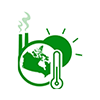
 Environment
Environment Economy
Economy Population and society
Population and society Extreme events and natural disasters
Extreme events and natural disasters Financial impacts and risks
Financial impacts and risks


